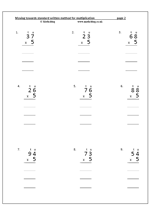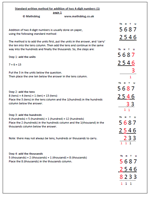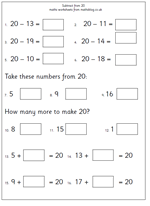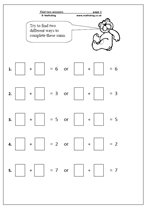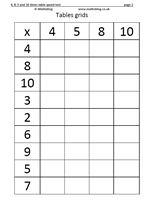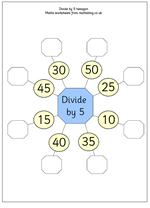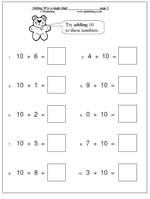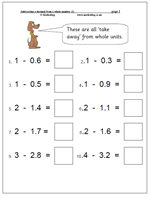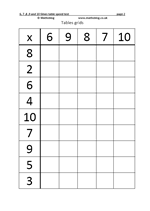 This maths worksheet has a tables grid for the 6x, 7x, 8x, 9x and 10x table.
This maths worksheet has a tables grid for the 6x, 7x, 8x, 9x and 10x table.
The grid is filled in by taking the numbers across the top with the numbers down the side as shown below.
x 060 7
2 12 14
6 36 42
These are mostly the harder tables to learn, apart from the tens. The nines also have a neat pattern to them; of course remembering that the digits always add up to 9 helps with this table.
There are many different approaches to this type of problem. Some children fill in the answers in strict order, others go through and complete the ones they know off by heart, and then try to work the rest out.
It is a good idea to set a time limit to these to encourage learning them off by heart.
